Kharkiv National Agrarian University named after V.V. Dokuchaiev:
Introduction
Kharkiv National Agrarian University is a long-standing and influential agricultural higher education institution in Ukraine. It aims to train professionals in the field of agriculture and has made important contributions to the development of agriculture in Ukraine and other regions.
Overview
Student size: about 3,500 students.
Number of faculty: 294 research and teaching staff, including 34 professors, 71 doctors, and 386 administrative staff.
History
The origin of the university can be traced back to October 5, 1816, when Tsar Alexander I issued a decree to establish an agricultural institute in Mariemont, a suburb of Warsaw, Poland.
In 1840, after the Warsaw Forest School was incorporated, the institute was renamed the Mariemont Agricultural and Forestry Institute.
In 1862 In 1914, the institute moved to Plava, Lublin Province, and was renamed the New Alexander Agricultural and Forestry Institute.
Before World War I, the institute was located in Plava, and in 1914 it moved to Kharkov, Ukraine.
In 1921, the institute was rebuilt and renamed the Kharkov Agricultural Institute.
During World War II, the institute moved to Katakurgan, Uzbekistan, and returned to Kharkov in October 1944, and in March 1946, in honor of the 360th anniversary of the birth of soil scientist V.V. Dokuchaev, it was renamed the Kharkov Agricultural Institute named after V.V. Dokuchaev.
In 1991, the institute was transformed into the Kharkov State Agricultural University named after V.V. Dokuchaev, and in March 2002 it was granted the status of a national university.
Founded in 1816.
School Strength
Faculty: The school has a highly qualified faculty, including 34 professors and 71 Doctors, who have rich teaching and scientific research experience in various fields of agricultural science, can provide students with professional guidance and cutting-edge knowledge.
Teaching facilities: The school has complete teaching facilities, including a library with more than 600,000 books, a 2,000-hectare experimental farm, a 70-hectare experimental field, and an 8,000-hectare educational and experimental forest farm, which provide students with good practice and research conditions.
Scientific research results: The school has carried out in-depth research in many fields of agricultural science and achieved a series of important scientific research results, providing strong technical support for the development of Ukrainian agriculture. Its research results have a certain influence in the academic circles at home and abroad, and have promoted scientific and technological progress in the field of agriculture.
International cooperation: The school actively carries out international cooperation and exchanges, and has established cooperative relations with universities and scientific research institutions in many countries, promoting academic exchanges and talent training. Through cooperation with international partners, the school is able to introduce advanced educational concepts and technologies to improve its own educational quality and scientific research level.
Institutional Nature
Public University.
Educational Philosophy
Focus on the combination of theory and practice, cultivate students' innovative ability and practical skills, so that students can have solid professional knowledge and practical problem-solving ability in the field of agriculture to adapt to the changing agricultural market needs and social development needs.
Key Laboratories and Disciplines
Key Disciplines: Agronomy, Plant Protection, Forestry, Land Surveying, Management and Economics, Accounting and Finance are the key disciplines of the school. These disciplines have achieved remarkable results in teaching and scientific research, and have trained a large number of professional talents in the agricultural field.
Key Laboratories: The school has a number of educational and scientific research laboratories, which provide important support for research and practical teaching in related fields, but the specific names of key laboratories have not been clearly found.
Faculty
The school has the following teaching units:
College of Agriculture
College of Plant Protection
College of Forestry
College of Land Surveying
College of Management and Economics
College of Accounting and Finance
College of International Education and Advanced Training
Center for International Cooperation and Academic Mobility
Basic Library
Department of Postgraduate Education
Department of Preschool Education
Education and Scientific Production Center "Kh Nau Research Field"
State-owned Enterprise "Skrypaiivske Education and Experimental Forestry"
Ranking
No clear and authoritative comprehensive ranking of the school in the world has been found, but as one of the best agricultural universities in Ukraine, it has a high reputation in the field of agricultural education.
Cost
Specific tuition information can be found on the school's official website. Tuition fees for different majors and degree levels may vary.
Campus
Teaching environment: The campus is located outside the city of Kharkiv and consists of six buildings with a beautiful environment and green trees. The school's teaching buildings, laboratories, libraries and other teaching facilities are reasonably distributed, providing students with a good learning environment.
Living facilities: There are student dormitories on campus to provide students with accommodation convenience. In addition, the living facilities around the school are relatively complete, including supermarkets, restaurants, hospitals, etc., which can meet the daily needs of students.
Natural landscape: There is an arboretum on campus, which was initiated by teachers from the Department of Agriculture and Forestry. It was built in the spring of 1972 and covers an area of 23.2 hectares. More than 900 shrubs and plants from Europe, the Caucasus, Central Asia, China, the Far East, Japan and North America are planted in the arboretum, including some rare species such as curly birch, ginkgo, dwarf birch, yew and North American pine. These plants not only add natural beauty to the campus, but also provide practice and research materials for students of related majors.
-
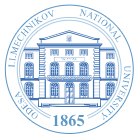
Odesa National University I.I. Mechnikov
-
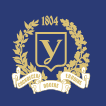
V.N. Karazin Kharkiv National University
-

V.I. Vernadsky Crimean Federal University
-

National Medical University O.O. Bogomolets
-
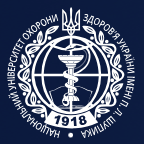
National Medical Academy of Post-Graduate Education named after P.L. Shupik
-

Taras Shevchenko National University of Kyiv
-

H.E.I. «Podillia State University»
-

Dnipro National University of Railway Transport named after academician V. Lazaryan
-
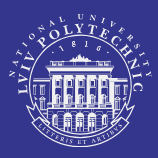
Lviv Polytechnic National University
-
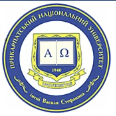
Vasyl Stefanyk Precarpathian National University
-

Mesoamerican University
-

Istmo University
-

Mariano Galvez University of Guatemala
-

Regional University of Guatemala
-

Galileo University
-

Francisco Marroquín University
-

Rafael Landívar University
-

University of the Valley of Guatemala
-

University of San Carlos of Guatemala
-

Technological Institute of Tlaxcala Plateau
-

Golfo University
-

Technological University of South Sonora
-

Technological University of Huejotzingo
-

Tizimín Institute of Technology
-

Chilpancingo Institute of Technology

